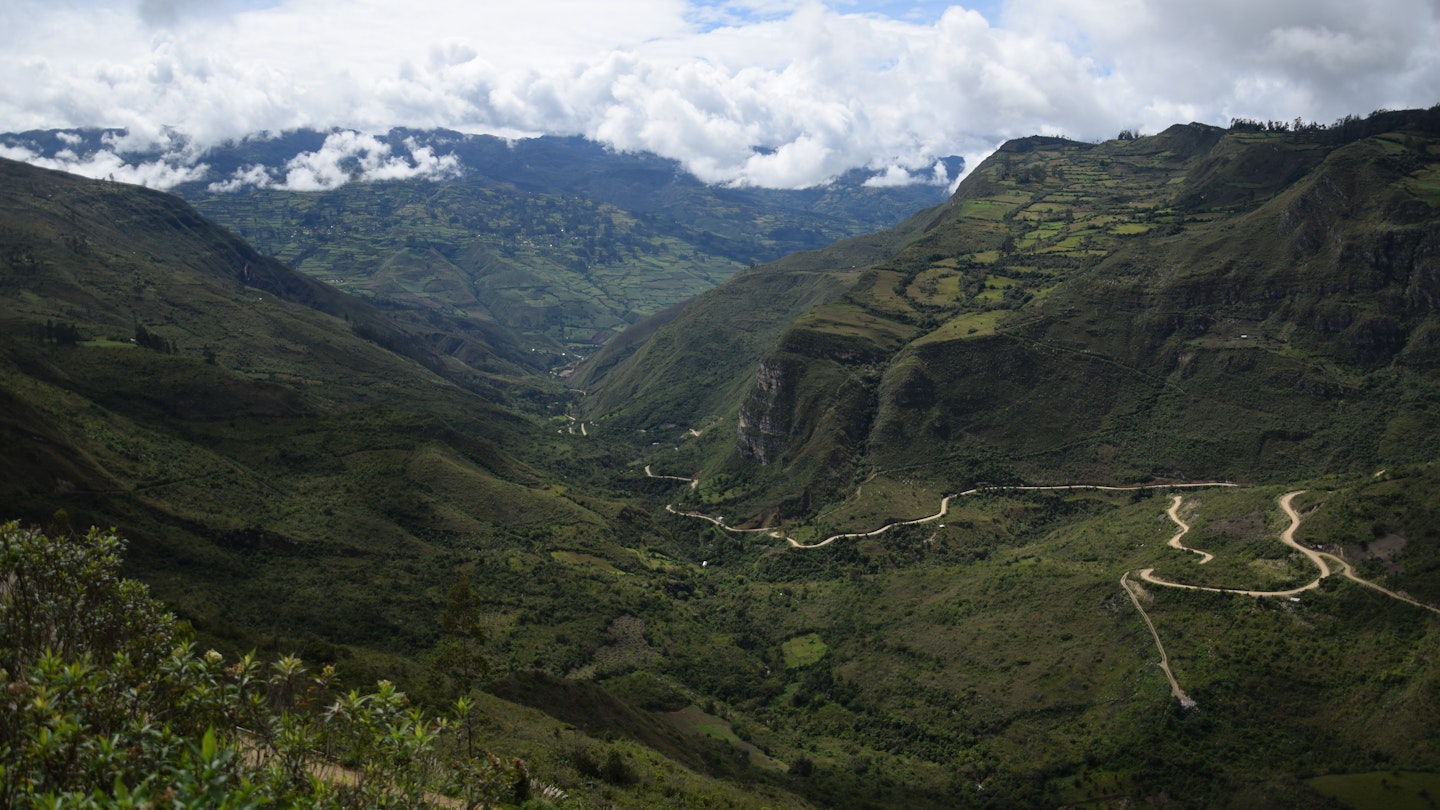Explore Chachapoyas: The Hidden Gem of Northern Peru
A growing network of paved roads, a new cable car to ancient ruins, and an increasing number of fine restaurants and hotels have made the northern city of Chachapoyas one of Peru’s fastest-growing destinations. However, its main attraction, the hilltop citadel of Kuelap, still receives only a fraction of the tourists who visit Machu Picchu, which has become so congested that authorities introduced timed entries in 2019.

The Inca may be Peru’s most iconic civilization; however, the enigmatic Chachapoya, known as ‘cloud warriors,’ lived a similarly complex existence in the modern-day region of Amazonas with intricate walled settlements and lavish burial chambers for their mummified dead. Therefore, here’s a look at how you can help combat overcrowding at the Inca sites near Cusco by delving into this lesser-known civilization of the north.
Wander through the ruins of Kuélap
Dubbed ‘the Machu Picchu of the north,’ Kuélap is both older (by more than 500 years) and higher up in the hills (by over 500m) than its more famous counterpart. The Chachapoya crafted near-impenetrable 20m-high limestone walls around this ancient city, with access through three narrow entryways.
Inside are the circular ruins of approximately 420 stone homes, many adorned with animistic ornamentations depicting snakes and jaguars. Each would have stood roughly 4.5m tall with a thatched conical roof. Archeologists believe a population of as many as 300,000 people lived here during the Chachapoya’s height of power around 1470 before the Inca invaded.
Long a haven for only the most intrepid tourists, a new cable car line linked Kuélap to the outside world in 2017, easing access to the site and doubling the number of visitors in its first year. The vast majority are Peruvian, but foreigners are beginning to recognize the impressive and easily accessible citadel in Peru’s emerging northern hills.

Hike to the Revash funerary complex
The cloud forests surrounding Kuélap are home to numerous archaeological ruins of the Chachapoya civilization that experience even less foot traffic than the iconic fortress. Among the most photogenic is the Revash funerary complex. It was here, around the 14th century, that the Chachapoya undertook the monumental task of carving a series of chullpas (ancient Andean funerary towers) from the side of a limestone cliff and decorating the surrounding walls with ochre pictographs.
Although the site has long been looted, archeologists have discovered several skeletons, tools, and other artifacts here, as well as in nearby (and even less accessible) cliff-hugging funerary complexes—all perched 2,800m above sea level. Consequently, access to Revash is via a well-marked 2km trail from the potato farming village of San Bartolo, about 80km south of Chachapoyas.

View ancient mummies at Museo Leymebamba
This striking museum in the small town of Leymebamba (85km south of Chachapoyas) contains the world’s finest exhibition on the Chachapoya people, who are said to have had light skin and green eyes, leading to some wild (and largely disproven) theories that they may have been of European origin.
Exhibits here include textiles, ceramics, and quipu (ancient record-keeping devices made from strings and knots), along with a fascinating glimpse into the medical practice of trepanation, wherein holes were drilled into skulls to relieve pressure. Most impressive of all are the mummies—there are 219 of them, all clamoring for space in a climate-controlled storage facility located behind a glass wall at the heart of the museum. Many remain wrapped in funerary bundles, while others have been laid bare, leaving an indelible impression.

Camp by the mausoleums of Laguna de los Cóndores
A 40km uphill hike from Leymebamba leads you to Laguna de los Cóndores, the remote Andean lagoon where the museum’s mummies (and over 2000 associated artifacts) were first discovered in 1996. Scientists consider it miraculous that these mummies have survived for over half a millennium in the dark, damp mausoleums where they were found. Notably, most of the world’s surviving mummies are uncovered in deserts, rather than misty cloud forests.
Travelers typically allocate three days for this journey, including one day for the strenuous hike (or horseback ride) to the forest-enclosed lagoon, a second for exploring the clifftop tombs, and a third for the descent. There is a basic hut near the ancient Chachapoya settlement offering overnight accommodation in the chilly climate at an elevation of 2,600m.

Explore the Sarcophagi of Karajía
Approximately 40km northwest of Chachapoyas, near the small town of Cruz Pata, a short 25-minute hike leads you to the human-shaped sarcophagi of Karajía. Little is known about these six burial chambers, each around 2.5 meters high, which are presumed to have been reserved for the highest members of Chachapoya society. Each sarcophagus is constructed from mud, straw, and bamboo, featuring a conical body painted in red and white, along with a funerary mask adorning the head. From their elevated position on a cliff, they gaze over the entire valley.

Experience the living legacy in Chachapoyas
The modern-day city of Chachapoyas—featuring cobblestone streets and whitewashed colonial buildings with red-tiled roofs—is the most logical base for any trip to Peru’s Amazonas region, offering all the services you’d expect from a budding tourist town. For a taste of Amazonas cuisine (adventurous eaters take note!), head to El Batan del Tayta, a theatrical restaurant known for its elaborate plates and ayahuasca-inspired decor. If you wish to cleanse your palate after indulging in Caspiroleta de Hormigas (a beverage made with milk, eggs, cinnamon, liquor, and ants), consider visiting the nearby Amazonika; it boasts a fantastic selection of Peruvian craft beers served at wooden tables inside a fairy-lit patio.
While Chachapoyas offers a solid variety of hostels and guesthouses, more atmospheric lodgings can be found in the surrounding countryside, including the stunning Gocta Andes Lodge (offering panoramic views of the towering Gocta Waterfall) and the serene Hotel Casa Hacienda Achamaqui (a colonial-style riverside retreat).





